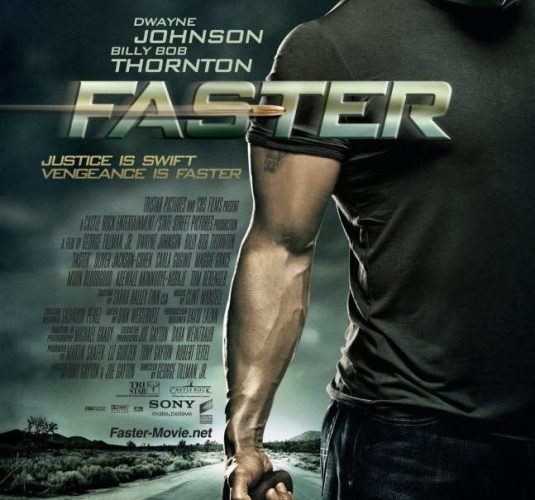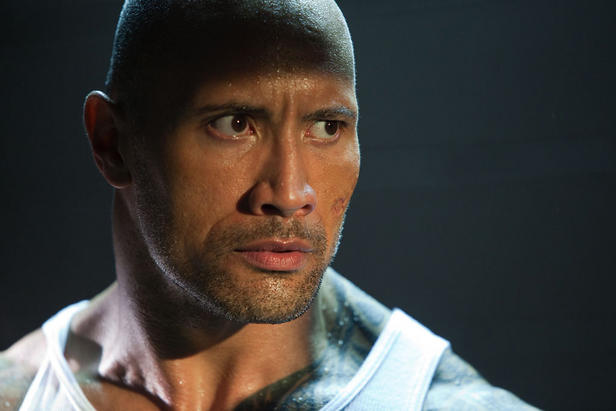Against all odds and without much warning, George Tillman Jr.’s Faster comes to life with more than just gun shot shells and head wounds, but also style and even a bit of substance. And while the film does star Dwayne Johnson as Driver, a just-released ex-con out to avenge his brother’s murder 10 years earlier, the charismatic Samoan has about one line for every year his character was in prison. Tillman’s smart to rely on what Johnson’s good at – being present. The man could back down a brick wall.
Made up of scars and brooding stares, Driver says only what needs to be said. All of his victims do the explaining. And at the beginning of his rampage, he doesn’t do much listening. But as Faster gets slower, the architecture of each life he’s about to end over the last 10 years comes into focus, forcing the man to consider forgiveness and the path to righteousness.
The grainy cinematography and completely unsubtle hot-and-cold color template, courtesy of Michael Grady, evoke 70s car films with impressive accuracy, while also incorporating shaky-cam shots and mile-a-minute editing so as to keep it modern. Tillman understands the camera and makes the most out of his talented crew. Showdowns we’ve seen a million times before are shot in ways never before tried. Case in point, a knife fight in a bathroom shot entirely with the camera looking up from the floor at its two subjects. Two gods of violence contending for greatness.
Where Quentin Tarantino used the Grindhouse “genre” to make a pretentious homage lacking much soul outside of an impressive car chase sequence, Tillman leans to the other side of these Disco-age cheapies, the ones that had apparent messages about society and what to do about it. Be it the rebellious deejay rooting for the car thief in Vanishing Point (the radio plays a significant role in this film) or the rebellious black man fighting The Man in stuff like Sweet Sweetback’s Baadasssss Song or The Harder They Come, the statements are clear, even funny in their obviousness.
But then there’s the charm of it all. A convoluted 3-way plot, crafted by the screenwriting Gayton brothers Joe and Tony, paints the world black and white at the film’s beginning, only to mash it all into gray by the film’s end. The three central men – Driver, Cop (Billy Bob Thornton) and Killer (Oliver Jackson-Cohen) – are equal parts good, bad and ugly. And in case you can’t figure it out, the Killer’s ring tone is the Morricone score. Just in case. Driver has good reason to end these lives, but good reason to let them live. Cop is a good father determined to tie up sins of the past and start anew. Killer is a cold-blooded hitman, bent to perfection thanks to a debilitating childhood disease that presumably rendering him weak and unable to walk. He’s spent his entire life recovering physically, but not quite psychologically. He’s also in love with the stunning Maggie Grace. But, honestly, who wouldn’t be?
It’s pure schlock done with the kind of sincerity so ridiculous it has to be commended. Despite it’s R-rating, there is nary a curse word or sex scene. The kills come fast and hard, but lack much blood or gore. Tillman’s crafted a film as hyperbolic and righteous as the sermons blaring on Driver’s car radio, and it’s hard not to want to be saved.



